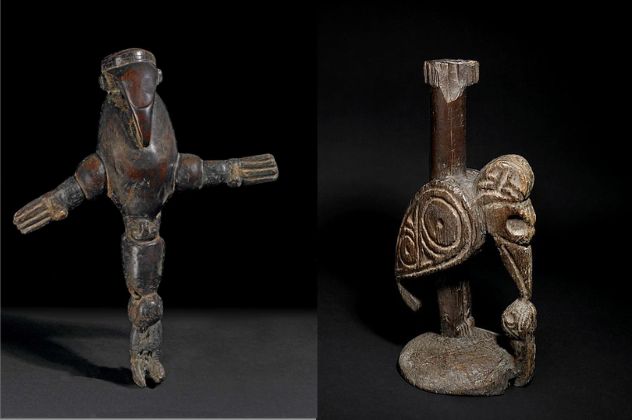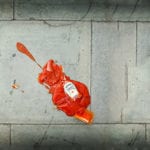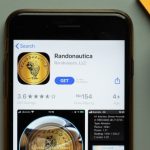 Weird Stuff
Weird Stuff  Weird Stuff
Weird Stuff  Our World
Our World 10 Ways Your Christmas Tree Is More Lit Than You Think
 Movies and TV
Movies and TV The 10 Coolest Stars to Set Sail on The Love Boat
 History
History 10 Things You Didn’t Know About the American National Anthem
 Technology
Technology Top 10 Everyday Tech Buzzwords That Hide a Darker Past
 Humans
Humans 10 Everyday Human Behaviors That Are Actually Survival Instincts
 Animals
Animals 10 Animals That Humiliated and Harmed Historical Leaders
 History
History 10 Most Influential Protests in Modern History
 Creepy
Creepy 10 More Representations of Death from Myth, Legend, and Folktale
 Technology
Technology 10 Scientific Breakthroughs of 2025 That’ll Change Everything
 Weird Stuff
Weird Stuff Ten Bizarre Facts About The Doge Meme
 Our World
Our World 10 Ways Your Christmas Tree Is More Lit Than You Think
 Movies and TV
Movies and TV The 10 Coolest Stars to Set Sail on The Love Boat
Who's Behind Listverse?

Jamie Frater
Head Editor
Jamie founded Listverse due to an insatiable desire to share fascinating, obscure, and bizarre facts. He has been a guest speaker on numerous national radio and television stations and is a five time published author.
More About Us History
History 10 Things You Didn’t Know About the American National Anthem
 Technology
Technology Top 10 Everyday Tech Buzzwords That Hide a Darker Past
 Humans
Humans 10 Everyday Human Behaviors That Are Actually Survival Instincts
 Animals
Animals 10 Animals That Humiliated and Harmed Historical Leaders
 History
History 10 Most Influential Protests in Modern History
 Creepy
Creepy 10 More Representations of Death from Myth, Legend, and Folktale
 Technology
Technology 10 Scientific Breakthroughs of 2025 That’ll Change Everything
10 Items England Has Been Asked to Give Back to Their Home Country
If you take a casual trip to the British Museum, you might notice something sort of odd: There’s a whole lot of stuff on display that hasn’t got much to do with England. There are artifacts from cultures originating from the farthest reaches of the globe and societies that are distanced from England by thousands of miles. Through the years, England has managed to acquire a lot of items of extreme historical significance using all sorts of methods. The home countries of these items have asked to have their treasures back. None of them have yet to be returned.
Related: 10 Fake Artworks And Artifacts Exhibited In Museums
10 Elgin Marbles
The Parthenon is one of the most recognizable structures ever created. A tribute to the gods and goddesses of Greece, the gorgeous temple is often used as an example in art and architecture classes, and it’s one of the most-photographed buildings in the world. Unfortunately, it was never photographed with the Elgin marbles still intact.
The elaborate carvings once decorated the Parthenon, constructed in the fifth century BC, in a brilliant frieze showing lively partygoers celebrating the goddess Athena. The marble slabs were removed from the ancient building in large pieces from 1801 to 1805 and found their way all the way to England courtesy of Lord Elgin. He was serving as the British ambassador to Greece at the time.
Greece has asked for these invaluable ancient sculptures and important pieces of national history to be returned, a request England has consistently refused.[1]
9 The Rosetta Stone
One of the most well-known historic artifacts ever discovered, the Rosetta Stone is one of the most significant archeological finds ever made. This stone was written in several languages, which gave historians the tools they needed to decipher writing systems that had not been used for hundreds or even thousands of years. That’s one heck of an impressive rock.
The stone was found in Egypt by none other than Napoleon, who actually re-discovered several remarkable artifacts from the ancient world while he was trying to take over his present world in the early 1800s. The stone was originally carved around 300 BC.
The English defeated the French at the Battle of Waterloo and somehow ended up with the Rosetta Stone, which is now on display in grand fashion at the British Museum. Being one of the most important pieces of history ever found, the Rosetta Stone has been the subject of numerous return requests from the Egyptian government. The stone remains in England.[2]
8 Amaravati Stupa Marbles
Dating to the third century BC, the Amaravati Stupa was a large and impressive shrine to Buddha that originates in modern-day Chennai, India. British colonizers discovered the shrine in the 1840s. They dismantled it and took pieces of it back to Britain, where it was ultimately re-assembled and put on display at the museum.
The sculptures taken from the site are known as the Amaravati marbles or Eliot marbles. They are carved panels that depict the life of Buddha and once decorated the outside of the stupa or shrine.
Historians have requested that the pieces of the shrine be returned to India, though so far, the objects remain firmly in England.[3]
7 The Benin Bronzes
Bronze sculptures that came from Benin, a country within the boundaries of modern-day Nigeria, stand tall and gleaming in the British Museum… despite the brutal way in which they were obtained. The bronzes, made in the 1200s, were taken as part of an 1897 expedition. Benin had revolted against its British overloads, and troops were sent to quell the resistance.
The city was sacked and looted, and the Kingdom of Benin fell. The bronze sculptures, more than 200 of them in total, have since found a home in the British Museum. Nigeria has made multiple requests to have the objects returned, with requests beginning as far back as 1960.
The bronzes were specifically referenced in 2018’s Black Panther, though the movie said the artifacts were in the “Museum of Great Britain,” which doesn’t exist, and that the bronzes came from Wakanda.
In 2018, England agreed to loan out some of the bronzes for display in a Nigerian museum, their country of origin. However, the bronzes are only on loan, and England is not relinquishing them forever.[4]
6 Maori Heads
There’s something disturbing about the Maori heads on a few different levels. These artifacts originate about as far away from England as possible. They were made as an important cultural symbol by the Maori people of New Zealand, who carefully tattooed and dried these heads for use in ceremonial rituals. Some of these heads are hundreds of years old, and hundreds of the heads have found their way into museums all over the world.
English people landing in New Zealand in the late 1700s found the heads to be objects of curiosity, and it became rather trendy to acquire the heads for sale in England. Many of them now create a bit of a macabre attraction at the British Museum.
New Zealand has sent multiple repatriation requests for these sacred objects and has managed to have several of them returned. However, many still remain on display in British museums and elsewhere in the world. [5]
5 Hoa Hakananai’a
This giant piece of history is one of the most recognizable and remarkable pieces on display in the British Museum, perhaps because it originates so very far away from England… but also because of its size. This is one of the enormous heads of Easter Island fame, a mysterious artifact that historians have continued to ponder since these massive sculptures were discovered. The enormous heads were crafted sometime between 1400 and 1600.
Members of the British Royal Navy took two of the heads in 1868 and brought them to England, where they have remained to this day despite many, many requests for them to be returned. It is believed that the Easter Island heads held great cultural or spiritual significance.[6]
4 Taino Wooden Artifacts

Known officially as the Bionayel figures and the Birdman, these wooden artifacts are among the most exotic pieces of art you can view at the British Museum. That’s because they come from a vastly different culture and region of the world. These Taino artifacts came to the UK all the way from Jamaica.
Also known as the Carpenter’s Mountain carvings, Jamaican historians say that the items were removed from a cave in this mountain. They were removed from the country and acquired by the British Museum sometime between 1799 and 1803. They became a formal part of the collection in 1977, according to an official request submitted to the UK by Jamaican officials.
In the 1980s, 137 cultural artifacts originating in Jamaica were found to be at the British Museum. The country has requested all Jamaican artifacts to be returned, but these two, in particular, have been repeatedly named for their cultural importance. The Taino were the first humans to inhabit Jamaica, so their historical value is immeasurable.[7]
3 Neanderthal Skulls
Though certainly not as display-friendly as the incredible Rosetta Stone or gorgeous Greek marbles, the Neanderthal skulls on display at Long’s Natural History Museum are two of the most important artifacts ever discovered. These skulls helped scientists understand a great deal about the Neanderthals and have helped to inform some of the basic knowledge we have of this other humanoid species.
The remains weren’t found in England. These skull fragments originated in Gibraltar. The Gibraltar National Museum has sent formal requests asking that these remains be returned. So far, those requests have not been honored. The skulls are believed to be around 50,000 years old.[8]
2 Items from the Chinese Summer Palace
To this day, the looting and destruction of the Summer Palace remain a sore point between England and China. It all began with the death of Thomas Bowlby, a foreign correspondent and British citizen. In retaliation for his death, British and French troops destroyed and burned the glorious Summer Palace, leaving it a heap of ruins. The palace was built in 1750.
Said to be one of the most beautiful buildings in the country and used to house some of the country’s most prized artworks, the Summer Palace was a marvel, and its loss was a huge blow to the Chinese people. Today, the ruins stand as a frequently-visited tourist site where visitors learn about the horrific destruction.
An unknown amount of items were taken away from the site and ended up in English and French museums. It is believed that England has several items, including imperial scepters, imperial vases, jade sculptures, and even pieces of a Chinese Imperial throne. Various Chinese citizens and leaders have publicly called for European museums and art collectors to return these invaluable pieces of history to their homeland.[9]
1 Relics of the Battle of Omdurman
During a British colonization mission in 1896 that went on until 1898, several artifacts from the Battle of Omdurman in modern-day Sudan were removed and taken to be displayed in various British museums.
The Sudanese government has asked for the return of armor, weapons, skulls, and a military banner that were taken as trophies of war. Sudan wants the items for display in their own national museum in order to tell the true story of this battle, according to their request.
The items remain on display scattered throughout various museums in England.[10]








